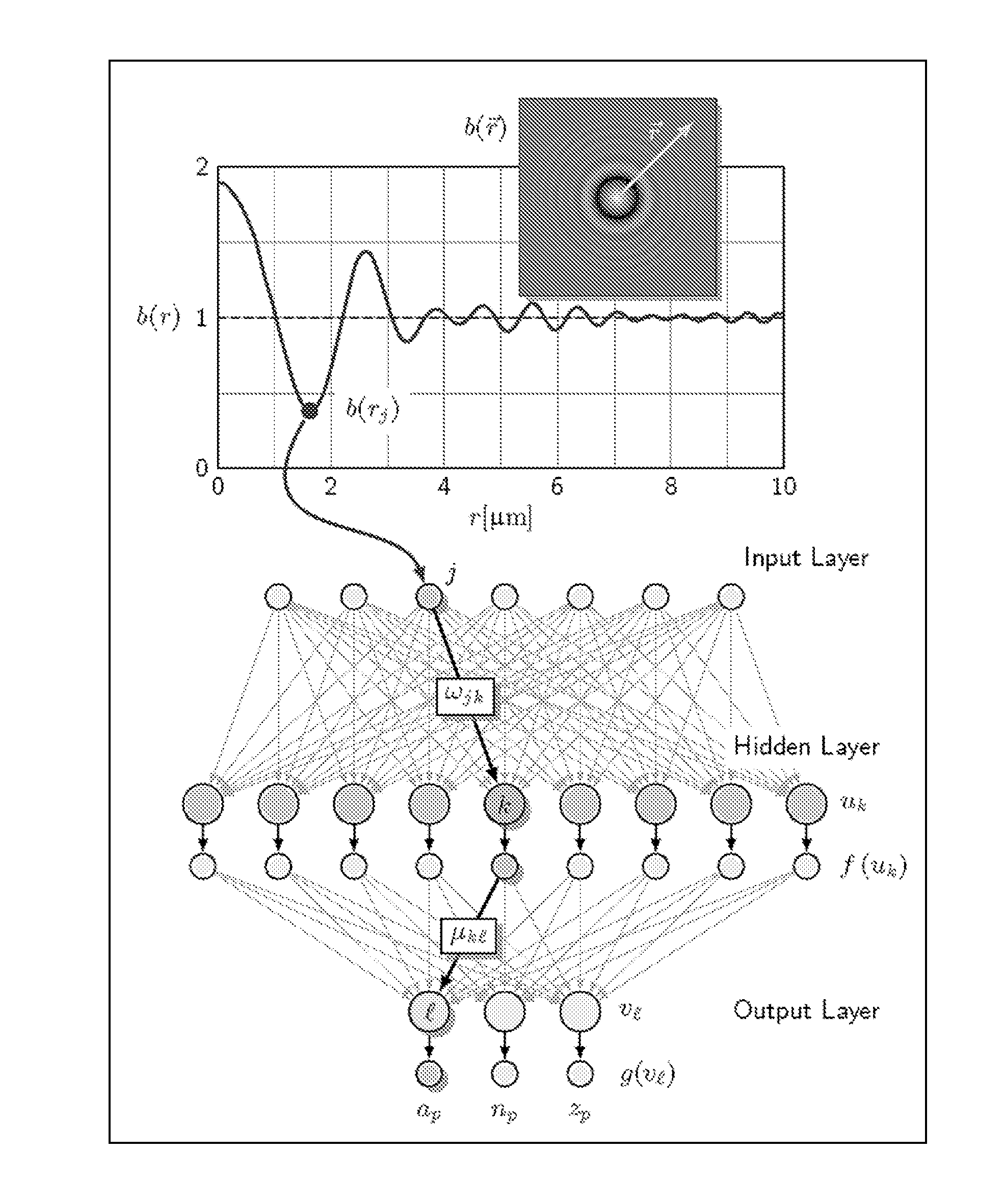Fast feature identification for holographic tracking and characterization of colloidal particles
a technology of colloidal particles and feature identification, applied in the field of fast feature identification for holographic tracking and colloidal particle characterization, can solve the problems of slowness and computational intensive extracting information, and achieve the effect of reducing the computational burden of localizing circular image features and establishing the position quickly and accurately
- Summary
- Abstract
- Description
- Claims
- Application Information
AI Technical Summary
Benefits of technology
Problems solved by technology
Method used
Image
Examples
Embodiment Construction
[0016]Machine learning techniques can be used to analyze holograms of objects, such as colloidal spheres, yielding estimates for spheres' positions and characteristics. This estimates can provide information about the objects that are precise enough for real-world applications, and performing rapidly enough for real-time operation.
[0017]One implementation relates to the use of FIG. 1A shows a typical hologram of a colloidal polystyrene sphere in water. This hologram was recorded with an in-line holographic video microscope using a collimated linearly polarized laser for illumination (Coherent Cube, vacuum wavelength λ=447 nm). Light scattered by the sphere interferes with the rest of the beam in the focal plane of a microscope objective (Nikon Plan Apo, 100× oil immersion, numerical aperture 1.4). The objective, in combination with a tube lens, relays the interference pattern to a video camera such as, (NEC TI-324A II) with an effective magnification of 135 nm / pixel. The intensity d...
PUM
 Login to View More
Login to View More Abstract
Description
Claims
Application Information
 Login to View More
Login to View More - R&D
- Intellectual Property
- Life Sciences
- Materials
- Tech Scout
- Unparalleled Data Quality
- Higher Quality Content
- 60% Fewer Hallucinations
Browse by: Latest US Patents, China's latest patents, Technical Efficacy Thesaurus, Application Domain, Technology Topic, Popular Technical Reports.
© 2025 PatSnap. All rights reserved.Legal|Privacy policy|Modern Slavery Act Transparency Statement|Sitemap|About US| Contact US: help@patsnap.com



